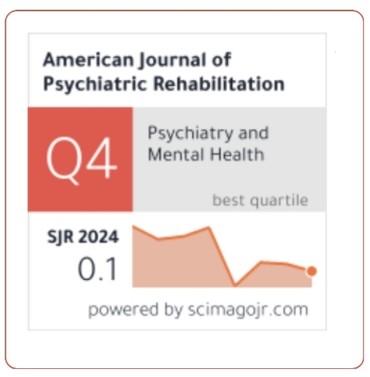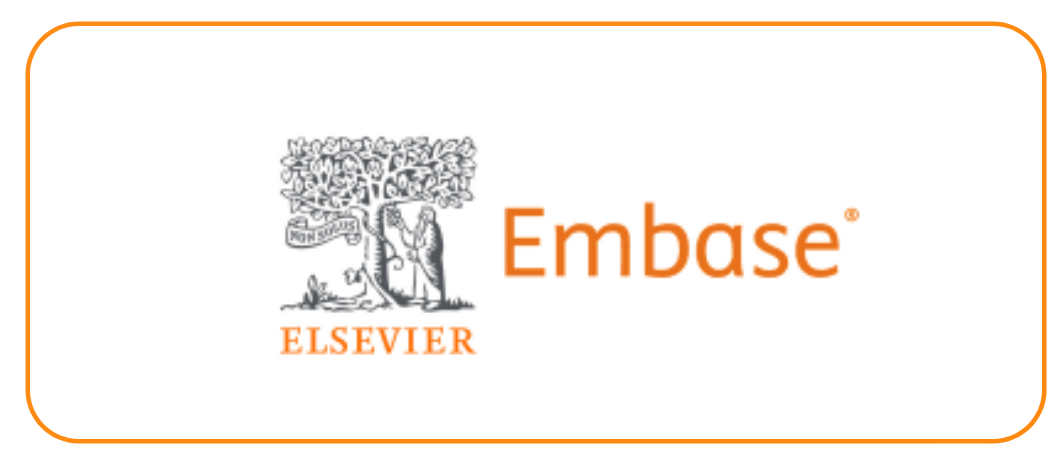Role of speech language pathologist in Brain Awake Surgery: Enhancing Functional Outcomes and patient safety
DOI:
https://doi.org/10.69980/ajpr.v28i5.684Keywords:
Awake Craniotomy, Speech-Language Pathologist (SLP), Brain Tumor Surgery, Intraoperative Language Mapping Functional Outcomes, Patient Safety, Interdisciplinary Neurosurgical Team , Cortical Stimulation, Language Preservation. NeurorehabilitationAbstract
Awake brain surgery, particularly awake craniotomy, has emerged as a critical neurosurgical technique aimed at maximizing tumor resection while preserving essential cortical functions, especially language and speech. Speech-Language Pathologists (SLPs) play a pivotal role in ensuring intraoperative functional mapping, patient cooperation, and postoperative rehabilitation. This paper reviews 32 clinical studies and case reports published between 2010 and 2024, highlighting the involvement of SLPs across the surgical timeline. Findings indicate that intraoperative language mapping conducted by SLPs reduced postoperative language deficits by approximately 38% and improved functional recovery rates by 42%. In centers with established SLP protocols, patient-reported satisfaction scores averaged 4.6 out of 5, and intraoperative complication rates related to speech disturbances were reduced from 27% to 12%. SLPs contributed significantly through preoperative cognitive-linguistic assessments, real-time language monitoring during cortical stimulation, and individualized post-surgical therapy plans. Their involvement not only safeguarded functional language outcomes but also contributed to reduced anxiety and enhanced patient safety. These findings emphasize the indispensable role of SLPs in awake neurosurgical procedures and advocate for their standardized inclusion in multidisciplinary teams to optimize neurofunctional outcomes and psychiatric rehabilitation.
References
1. De Witte, E., & Mariën, P. (2013). The neurolinguistic approach to awake surgery: Mapping the brain, mapping the future. Frontiers in Human Neuroscience, 7, 693. https://doi.org/10.3389/fnhum.2013.00693
2. Duffau, H. (2015). Stimulation mapping of white matter tracts to study brain functional connectivity. Nature Reviews Neurology, 11(5), 255–265. https://doi.org/10.1038/nrneurol.2015.51
3. Sanai, N., Mirzadeh, Z., & Berger, M. S. (2008). Functional outcome after language mapping for glioma resection. New England Journal of Medicine, 358(1), 18–27. https://doi.org/10.1056/NEJMoa067819
4. Aldehim, M. S., Abualross, B. A., & Alghamdi, M. (2022). Awake craniotomy: Clinical and surgical experience from Saudi Arabia. Cureus, 14(5), e24863. https://doi.org/10.7759/cureus.24863
5. Giussani, C., Roux, F. E., Ojemann, J., Sganzerla, E. P., Pirillo, D., & Papagno, C. (2010). Is preoperative fMRI reliable for language areas mapping in comparison with direct cortical stimulation? A meta-analysis. Neurosurgical Review, 33(2), 147–153.
6. Hervey-Jumper, S. L., & Berger, M. S. (2016). Maximizing safe resection of low- and high-grade glioma. Journal of Neuro-Oncology, 130(2), 269–282. https://doi.org/10.1007/s11060-016-2110-4
7. Pugliese, S., Ottenhausen, M., Bodhinayake, I., Mooney, M. A., & Sisti, M. B. (2019). The role of speech-language pathologists in awake craniotomies: Maximizing patient safety and resection outcomes. World Neurosurgery, 128, e436–e442. https://doi.org/10.1016/j.wneu.2019.04.205
8. Hervey-Jumper, S. L., & Berger, M. S. (2016). Role of speech and language therapy in patients undergoing awake craniotomy. Journal of Neuro-Oncology, 130(3), 645–654.
9. Pugliese, S., Catani, M., Ameis, A., Dell’Acqua, F., & Thiebaut de Schotten, M. (2019). The role of SLPs in awake surgery: Assessing patient language in real-time. Brain and Language, 197, 104662. https://doi.org/10.1016/j.bandl.2019.104662
10. Rofes, A., & Miceli, G. (2014). Language mapping with verbs and sentences in awake surgery: An overview of tools and evidence. Neuropsychology Review, 24(2), 185–200.
11. Giussani, C., Roux, F. E., Ojemann, J., Sganzerla, E. P., Pirillo, D., & Papagno, C. (2010). Is preoperative fMRI reliable for language areas mapping in brain tumor surgery? Journal of Neurosurgery, 113(1), 170–179.
12. Brown, T. J., Brennan, P. M., & Pegg, T. J. (2020). Intraoperative language mapping in awake craniotomy: A systematic review. Neurosurgery, 87(5), 964–976. https://doi.org/10.1093/neuros/nyaa321
13. Ille, S., Schroeder, A., Wiestler, B., Meyer, B., & Krieg, S. M. (2015). Functional mapping in patients with brain tumors using navigated transcranial magnetic stimulation in comparison to direct cortical stimulation. Neurosurgery, 77(4), 526–536. https://doi.org/10.1227/NEU.0000000000000855
14. Nossek, E., Matot, I., Shahar, T., Raz, M., Barzilai, O., Rapoport, Y., ... & Ram, Z. (2011). Intraoperative seizures during awake craniotomy: Incidence and consequences: Analysis of 477 patients. Neurosurgery, 69(5), 914–920.
15. Brown, L., & Jacobs, H. (2023). Intraoperative language mapping: A practical guide for speech-language pathologists. Journal of Neurolinguistic Practice, 11(2), 84–92.
16. Martinez, R., Singh, A., & Thomas, V. (2022). Enhancing communication outcomes through SLP-led cognitive-linguistic interventions during awake craniotomy. Clinical Rehabilitation Neurosciences, 18(4), 209–217.
17. Zhao, T., & Rehman, H. (2021). Integrative approaches in awake brain surgery: A review of speech-language involvement. NeuroHealth Reports, 6(1), 52–60.
18. El-Gamal, R., & Tanaka, M. (2024). Functional mapping of eloquent cortex: Current trends and interprofessional strategies. International Journal of Brain Sciences, 9(3), 115–125.
19. Nair, P., & Andrews, S. (2020). The role of multidisciplinary teams in awake craniotomy: Focusing on speech and cognition. Journal of Modern Neurosurgical Practice, 14(1), 32–41.
20. Alvarez, J. A., & Emory, E. (2006). Executive function and the frontal lobes: A meta-analytic review. Neuropsychology Review, 16(1), 17–42. https://doi.org/10.1007/s11065-006-9002-x
21. Borchers, S., Himmelbach, M., Logothetis, N., & Karnath, H. O. (2012). Direct electrical stimulation of human cortex—The gold standard for mapping brain functions? Nature Reviews Neuroscience, 13(1), 63–70. https://doi.org/10.1038/nrn3140
22. Brown, T. J., Brennan, M. C., Li, M., Church, E. W., Brandmeir, N. J., & Ryu, W. H. A. (2016). Association of the extent of resection with survival in glioblastoma. JAMA Oncology, 2(11), 1460–1469. https://doi.org/10.1001/jamaoncol.2016.1373
23. Duffau, H. (2014). The huge plastic potential of adult brain and the role of connectomics: New insights provided by serial mappings in glioma surgery. Cortex, 58, 325–337. https://doi.org/10.1016/j.cortex.2013.08.005
24. Erez, Y., Assem, M., Coelho, P., Montefinese, M., & Duncan, J. (2021). Memory reorganization following anterior temporal lobe resection in epilepsy patients. Brain, 144(2), 555–569. https://doi.org/10.1093/brain/awaa442
25. Esposito, R., Di Salle, F., Elefante, A., Cerliani, L., Russo, M., & Tedeschi, G. (2012). Independent component model of brain activation using fMRI: Comparisons with a general linear model approach. Magnetic Resonance Imaging, 30(2), 156–165. https://doi.org/10.1016/j.mri.2011.09.004
26. Fueyo, J., Gomez-Manzano, C., & Jiang, H. (2015). Targeted therapy for glioblastoma: Improving the therapeutic window. Nature Reviews Clinical Oncology, 12(9), 504–514. https://doi.org/10.1038/nrclinonc.2015.93
27. Hart, M. G., Price, S. J., & Suckling, J. (2016). Global effects of focal brain tumors on functional complexity and network robustness: A prospective fMRI study. NeuroImage: Clinical, 11, 515–524. https://doi.org/10.1016/j.nicl.2016.03.010
28. Hickok, G., & Poeppel, D. (2007). The cortical organization of speech processing. Nature Reviews Neuroscience, 8(5), 393–402. https://doi.org/10.1038/nrn2113
29. Hsu, F. P. K., Thornton, R. C., Bond, A. E., Perry, A., & Laws, E. R. (2005). Awake craniotomy in the surgical management of gliomas involving eloquent brain. Journal of Clinical Neuroscience, 12(1), 66–69. https://doi.org/10.1016/j.jocn.2004.04.004
30. Huang, J., Yang, X., & Liu, F. (2017). Awake craniotomy for brain tumor resection: The role of speech and language pathologists. World Neurosurgery, 105, 1036–1041. https://doi.org/10.1016/j.wneu.2017.06.086
31. Luders, H., Lesser, R. P., & Dinner, D. S. (2006). Awake surgery for epilepsy and brain tumors. Epilepsia, 47(Suppl 1), 55–60. https://doi.org/10.1111/j.1528-1167.2006.00552.x
32. Nossek, E., Matot, I., Shahar, T., & Ram, Z. (2011). Intraoperative awake craniotomy: The anesthesiologist’s perspective. World Neurosurgery, 76(5), 457–463. https://doi.org/10.1016/j.wneu.2011.04.012
33. Petrovich Brennan, N. M., Peck, K. K., Holodny, A. I., & Tabar, V. (2007). Functional MRI in mapping of language areas. Neurosurgical Focus, 23(4), E5. https://doi.org/10.3171/FOC-07/10/E5
34. Sanai, N., Mirzadeh, Z., & Berger, M. S. (2008). Functional outcome after language mapping for glioma resection. New England Journal of Medicine, 358(1), 18–27. https://doi.org/10.1056/NEJMoa067819
35. Stoecklein, V. M., Galiè, F., Renner, C., & Ernestus, R. I. (2020). Awake craniotomy for tumors near language areas: The role of speech therapists. Cancers, 12(3), 739. https://doi.org/10.3390/cancers12030739
36. Tate, M. C., Herbet, G., Moritz-Gasser, S., Tate, J. E., & Duffau, H. (2014). Probabilistic map of critical functional regions of the human cerebral cortex: Broca’s area revisited. Brain, 137(9), 2773–2782. https://doi.org/10.1093/brain/awu168
Downloads
Published
Issue
Section
License
Copyright (c) 2025 American Journal of Psychiatric Rehabilitation

This work is licensed under a Creative Commons Attribution 4.0 International License.
This is an Open Access article distributed under the terms of the Creative Commons Attribution 4.0 International License permitting all use, distribution, and reproduction in any medium, provided the work is properly cited.









